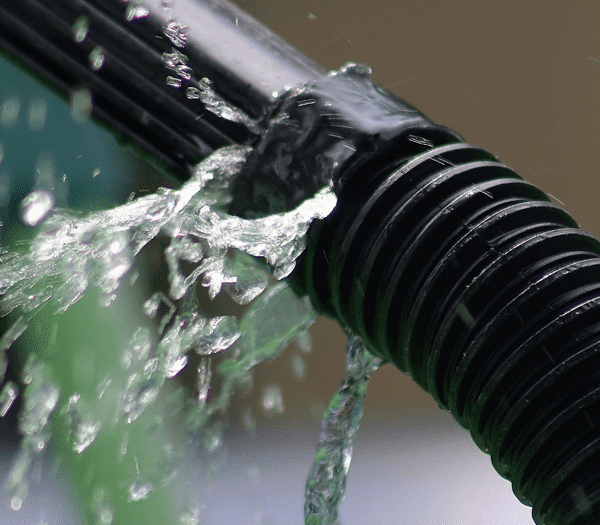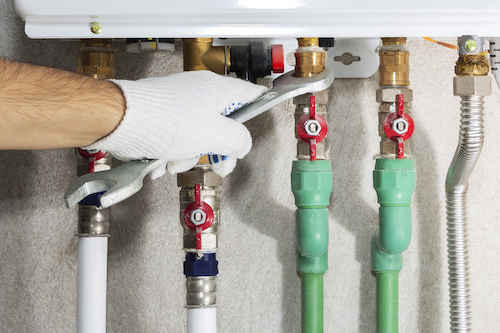How to Swiftly Spot and Efficiently Repair a Leaking Pipe
How to Swiftly Spot and Efficiently Repair a Leaking Pipe
Blog Article
They are making a number of great points relating to What to Know Before Installing a Dishwasher overall in this article down below.

A ruptured pipe is a significant emergency; you can only stand as you watch water you pay a lot to rejoin with the earth. In worse instances, you discover a swimming pool on your kitchen floor, which is a terrific trip hazard, especially if you have children around. If the pipeline that ruptured remained in your walls, trouble: you may require to repaint that entire section.
Exactly how can a catastrophe like a burst pipe be prevented and also handled? Well, by listening to your specialist emergency plumbings and also following these policies.
Just how do I understand when my pipes have burst?
Rising and fall water stress
Pipelines do not just burst in a day. You might have seen that your cooking area tap or shower does not run quickly when you turn the faucet. It might stop briefly for a couple of secs and afterwards blast you with even more force than usual.
In other circumstances, the water may seem regular initially, after that drop in stress after a few secs.
Damp walls and water discolorations
Before a pipeline ruptureds, it will certainly leakage, many times. If this persistent leaking goes unnoticed, the leak might graduate right into a large laceration in your pipe. One very easy method to prevent this emergency is to watch out for wet walls advertisement water stains. These water discolorations will certainly lead you right to the leak.
Puddles under pipes and sinks
When a pipeline ruptureds, the discharge forms a pool. It might appear that the pool is growing in size, and no matter the number of times you mop the pool, in a few minutes, there's another one waiting to be cleaned up. Often, you may not have the ability to trace the puddle to any noticeable pipelines. This is a sign to call a specialist plumber.
Untraceable leaking noises
Pipeline ruptureds can happen in one of the most undesirable areas, like within concrete, inside wall surfaces, or under sinks. When your house goes silent, you may have the ability to hear an irritatingly persistent trickling sound. Also after you have actually checked your shower head and kitchen faucet, the leaking might proceed.
Precious reader, the leaking might be coming from a pipe inside your wall surfaces. There isn't much you can do about that, other than inform a specialist plumber.
Shut off the Water
When water ices up, it broadens in quantity by regarding 9 percent. As well as it increases with tremendous force: The stress inside pipes may go from 40 extra pounds per square inch to 40,000 psi! No pipeline can hold that much stress, so it bursts. The break may occur where the ice types, however more often, it takes place where water stress discovers a vulnerable point in the pipe. That might be inches or perhaps feet from the icy location. Discover the water shutoff valve and also switch off the water to prevent even more damages. You might also need to shut down the electrical power also, relying on where the leaks takes place and just how huge it is.
Polluted water
Many people assume a ruptured pipeline is a one-way electrical outlet. Rather the contrary. As water spurts of the hole or laceration in your plumbing system, contaminants discover their way in.
Your water might be infected from the resource, so if you can, check if your water storage tank has any problems. However, if your drinking water is supplied as well as purified by the local government, you ought to call your plumber instantly if you see or smell anything amusing in your water.
What do I do when I spot a burst pipeline?
Your water meter will continue to run also while your water wastes. To reduce your losses, discover the main controls and also transform the supply off. The water pipe are an above-ground structure at the edge of your residential or commercial property.
How to Fix & Detect a Leaking Pipe
How Do I Know if a Pipe is Leaking?
Leak detection tests can help you determine if your pipe has a leak. Even if you don’t see an apparent leak, you should still conduct leak detection tests regularly to save water and money—and prevent major damage to your home.
Water meter. It can be helpful to figure out what your usual water meter usage numbers are and then monitor them regularly. To monitor your meter, first, turn off all water faucets in your home. Check the meter and write down the numbers. In a few hours, check the meter again. If the numbers have changed, you have a leak. Water gauge. Use a water gauge to test your water pressure. Your showerhead should produce a certain amount of water pressure based on its model and design. If the pressure is lower than it is supposed to be for that specific showerhead, your home likely has a leak. Puddles. Look inside your bathroom, laundry, and kitchen sink cabinets. Puddles around the cabinets or around toilets, tubs, showers, and washing machines indicate the presence of a leaking pipe. You may also notice loose tiles, peeling or flaking paint, or mold caused by water accumulation. Napkin test. Even if you don’t see any puddles, you may still have a leak. You can test for water leaks in the bathroom, laundry, and kitchen by wiping below-sink connections with a napkin, paper towel, or piece of toilet paper. If it becomes damp, you probably have a leaking pipe under the sink. Discolored walls. Walls that are discolored—usually with brown or yellow stains—or bulging might mean that they have been impacted by water damage caused by a leaking pipe. Smell. A leaky pipe will create sitting water, and over time, that water may develop a musty smell. If your home smells musty, but you can’t locate the source, it may be due to a leak. Steps for Fixing a Leaking Pipe
A leaky drain can be remedied by tightening the pipe base, replacing the drain seal, caulking the rim, and tightening the pipe nut. Similarly, a leaking toilet pipe can be treated by tightening the packing nut. You may also need to replace the valve. A leaky faucet may just need tightening or replacement of the washers. If that doesn’t work, consider replacing your faucet. If your pipe has a hole in it, you may want to use a pipe leak sealer or pipe leak tape. This quick fix for water pipe leaks can also temporarily fix a copper pipe leak. https://www.ahs.com/home-matters/quick-tips/how-to-tell-if-pipes-are-leaking/

Do you enjoy more info about What to Know Before Installing a Dishwasher? Make a remark directly below. We'd be pleased to know your responses about this blog. In hopes that you visit us again before long. Enjoyed our posting? Please share it. Let someone else check it out. We love reading our article about What to Know Before Installing a Dishwasher.
Top-notch care? Dial. Report this page